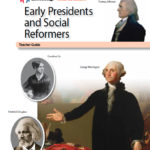The Seneca Falls Convention, held in Seneca Falls, New York, on July 19 to July 20, 1848, was the first women’s rights convention held in the United States. At that convention, the Declaration of Sentiments was written that outlined demands for women’s equality. This lesson uses video clips to have students understand the important people and events that led to the Declaration of Sentiments and then apply the text of the Declaration to today.
19th Amendment: Part 1 Podcast
The prominent figures and events of the women’s suffrage movement of the 19th and 20th centuries can feel almost mythical at times. That’s in part because they are, in fact, myths. The telling of the Nineteenth Amendment tends to stretch from a convention in Seneca Falls, New York, in 1848 to the amendment’s ratification in 1920, but the true story is a much longer one. We explore the myths and unveil the realities in part one of two episodes on the Nineteenth Amendment. Our guests are historians Martha Jones of John Hopkins University, Laura Free of Hobart and William Smith Colleges, and Lisa Tetrault of Carnegie Mellon University.
This short episode includes a one-page Graphic Organizer for students to take notes on while listening, as well as discussion questions on the back side.
Women’s Suffrage and Equal Rights: Lesson Plans and Resources

On August 18, 1920, the 19th Amendment to the United State Constitution was ratified, thus granting women the right to vote. The ratification of this amendment was a result of the powerful, unwavering momentum of hundreds of women who first convened a women’s rights convention in Seneca Falls, New York. This collection provides free lessons that will help students learn more about this important time in history, highlighting important developments in not only Women’s Rights, but U.S. Civil Rights and other amendments to the Constitution.
The American Revolution Changes the Status of Women

This short video illustrates how women in post-revolutionary America came to be seen as intellectual beings responsible for fostering civic ideals in their husbands and children. These “republican mothers” were protectors of the public good. Professor Rosemarie Zagarri concludes that the flowering of feminist sentiments originating in the 1770’s reached its fruition in the Seneca Falls Declaration of 1848.
The 19th Amendment: A Woman’s Right to Vote
Voting is the most basic right of a citizen and the most important right in a democracy. When you vote, you are choosing the people who will make the laws. For almost a century and a half of our nation’s history, women were barred from exercising this fundamental right. This film explores the long, difficult struggle for women to win the right to vote. It’s about citizenship, the power of the vote, and why women had to change the Constitution with the 19th Amendment. The film includes primary sources and commentary from historians, legal scholars, and Justices Ruth Bader Ginsburg and Anthony Kennedy.
A Teacher’s Guide for Women’s History
The 116th U.S Congress that began its two-year session in January 2019 is historic for a few reasons. The Speaker of the House, Nancy Pelosi, is not only the first woman to hold the position, but also is the first person to return to the Speaker’s office in the House since Sam Rayburn in 1955. On another historical note, 102 women were elected to the House of Representatives and 25 serve in the Senate — the most women ever elected to Congress. With next year marking one hundred years since ratification of the 19th Amendment, this Women’s History Month is about more than just looking back. In this resource, find a list of compelling questions, student activities, and resources and lesson ideas.
American Reformers (CKHG Unit)

This unit (the second part of Early Presidents and Social Reformers) focuses on the efforts to improve American society in the early 1800s. Across 6 lessons, students learn about the temperance movement, free public education, the abolitionists’ crusade to abolish slavery, and the early women’s rights movement. The unit explores early reformers’ legacy in ongoing modern-day struggles for equality and civil rights.